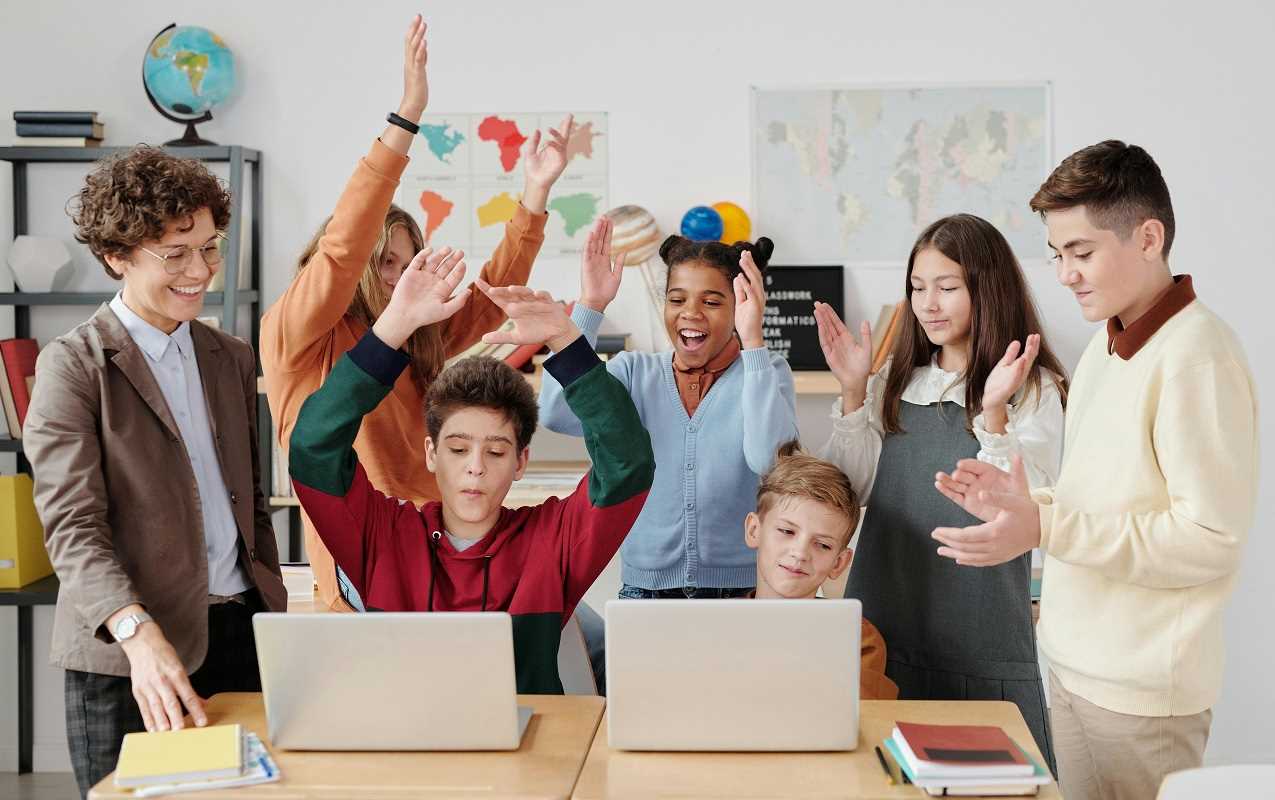Once upon a time, classroom learning was pretty much one-size-fits-all. The teacher taught. The students listened (or tried to). And if you didn’t get it? Well, tough luck—there was a test next week. But today? Oh, today is a whole different story. Thanks to education technology—affectionately known as ed-tech—students are getting learning experiences built just for them. Like a Spotify playlist, but instead of vibey tunes, you’re unlocking algebra skills or nailing Spanish verbs. Intrigued? Grab a seat and some snacks, because we’re about to go full nerd on how ed-tech is changing the game with personalized learning paths. Bonus points if you imagine this article in Morgan Freeman’s voice.
What’s a Personalized Learning Path, Anyway?
A personalized learning path is basically the educational equivalent of “You do you.” It’s learning designed around you—your strengths, your struggles, your pace. Instead of the traditional “Hey, everyone read Chapter 6 and pray you understand it,” it’s more like “Okay, Chris is acing geometry but struggling with decimals, so we’ll tweak it for him.” It’s like school just learned how to use a GPS and actually found the fastest route for everyone.
And who’s enabling all this personalized goodness? That’s right—technology. Smart software, AI, data analytics, and, of course, the internet, are all working together to make education feel a little less factory assembly line and a lot more “Choose Your Own Adventure.”
The Role of Tech (AKA the Nerdy but Cool Part)
Here’s the lowdown on how tech makes this magic happen. It all boils down to data and adaptability. Teachers, apps, and shiny gadgets are now armed with the tools to track how students learn—what they get right, what they struggle with, and even how fast they’re progressing. They use this info (don’t worry, it’s not as creepy as it sounds) to adjust lessons and recommend tasks that are challenging but doable. Basically, it’s like having a personal trainer, but instead of yelling “Do more burpees,” it says, “Hey, you’re ready to tackle advanced physics concepts.”
For example, adaptive learning platforms like Khan Academy or IXL analyze your answers and adjust the level of difficulty accordingly. Struggling with long division? No problem—here’s a refresher. Crushing quadratic equations? Cool, here’s a sneak peek at college-level stuff. These systems are like Sherpas, guiding you up the mountain of knowledge so you don’t get stuck halfway up.
AI also plays a huge role. (No, not the evil, world-dominating kind—yet.) AI-powered tools are the quiet geniuses behind learning platforms like Duolingo, which tweaks its lessons based on whether you nailed that last grammar quiz or need more practice with “el gato está bajo la mesa.” It’s not just teaching; it’s learning how you learn.
Why It’s Not Just Cool — It’s Legit Useful
Okay, so this all sounds pretty snazzy, but does it actually work? The short answer is yes, in ways that even your most skeptical classmate would have to admit are impressive. Here are a few reasons why personalized learning is making everyone—from students to parents to teachers—a little happier.
1. It Empowers Students to Be the Boss of Their Learning
Remember how annoying it was when you were stuck in a group project and everyone moved at a snail’s pace? Personalized learning fixes that. Students who learn quickly can zoom ahead, while those who need more time don’t get left behind. Everyone wins.
2. Goodbye, Boredom (Maybe)
There’s nothing worse than slogging through something you already know. Like, we get it, mitochondria is the powerhouse of the cell. Personalized learning keeps things interesting by serving up new challenges and topics tailored just for you. It feels less like schoolwork and more like unlocking the next level of a video game.
3. Teachers Can Focus on the Fun Part—Teaching!
Tech doesn’t replace teachers; it frees them up. Instead of spending hours grading or prepping a “one-size-fits-all” lesson, teachers can spend more time connecting with students and doing what they do best—making learning click. (Also, less grading = more coffee breaks, which is a win for humanity.)
4. It Levels the Playing Field
Here’s the thing: Every student learns differently. Some need a bit of extra help, while others might need more advanced material to stay engaged. Personalized learning offers everyone, no matter their starting point, a chance to thrive. It’s like handing out jetpacks to kids who’ve been riding tricycles uphill.
Meet the Tech That’s Making It Happen
By now, you’re probably curious about the apps and tools behind this whole revolution. Don’t worry, I’ve got you covered. Here’s a look at some of the rockstars of ed-tech.
- Khan Academy: The OG of online education, Khan Academy serves personalized exercises and lessons for pretty much every subject under the sun. Got stuck on something? Bam—there’s a video for that.
- Google Classroom with Add-ons: Sure, it’s mostly used to organize and track assignments, but paired with other apps (think Edpuzzle or Quizizz), it becomes a powerhouse of customized learning.
- DreamBox Learning: This math-focused platform is like a math teacher’s secret weapon. It adapts based on how you solve problems and offers tips to strengthen weak areas.
- NoRedInk: Struggling with grammar? This one uses super-detailed quizzes to target weak spots and makes learning punctuation weirdly fun.
- Edmentum (for schools): It’s a massive system that helps schools create individualized learning plans for every student, then tracks performance like a teacher with X-ray vision.
Challenges
Alright, before we call ed-tech the hero of the century, there are a few wrinkles to iron out. First off, not everyone has access to fancy tablets or high-speed internet. That digital divide? It’s real, and if policymakers don’t step up, personalized learning might end up widening gaps instead of closing them.
Then there’s the whole “screen time” debate. Sure, tech is useful, but too much time on devices can mess with your focus or sleep (hello, blue light at midnight). Educators and parents need to strike a balance to make sure tech is a tool, not a crutch.
And hey, teachers still play a massive role here. Personalized learning doesn’t mean abandoning the human touch. After all, even the best algorithm couldn’t detect that Ellie had a rough morning because of a fight with her best friend. Teachers bring empathy, humor, and all those other squishy-but-amazing qualities no machine can replicate.
The Road Ahead
Ed-tech isn’t slowing down anytime soon. Virtual reality, augmented reality, and more advanced AI are on the horizon, promising even wilder ways to personalize education. Imagine history lessons where you’re chilling in a VR Ancient Rome or science labs where you build DNA models in virtual space. Freaking rad, right?
But for this to work for everyone, we need investment in making this tech accessible, support for training teachers to use it effectively, and thoughtful conversations about where to draw the line between innovation and just plain screen addiction. No pressure or anything, humanity.
Final Thoughts
Personalized learning isn’t just a buzzword—it’s happening. Thanks to today’s ed-tech wonders, students are getting lessons tailored to their unique brains, and education is finally cracking the code for making learning fun, effective, and empowering. Whether it’s through apps, AI systems, or platforms designed for engagement, there are endless opportunities to make school feel less like a chore and more like an adventure.
Who knows? Maybe one day you’ll reflect on your personalized learning path and think, “Hey, this was pretty genius.” If nothing else, at least you had options—and maybe learned Spanish and how to slay fractions along the way. ¡Vamos!
 (Image via
(Image via





